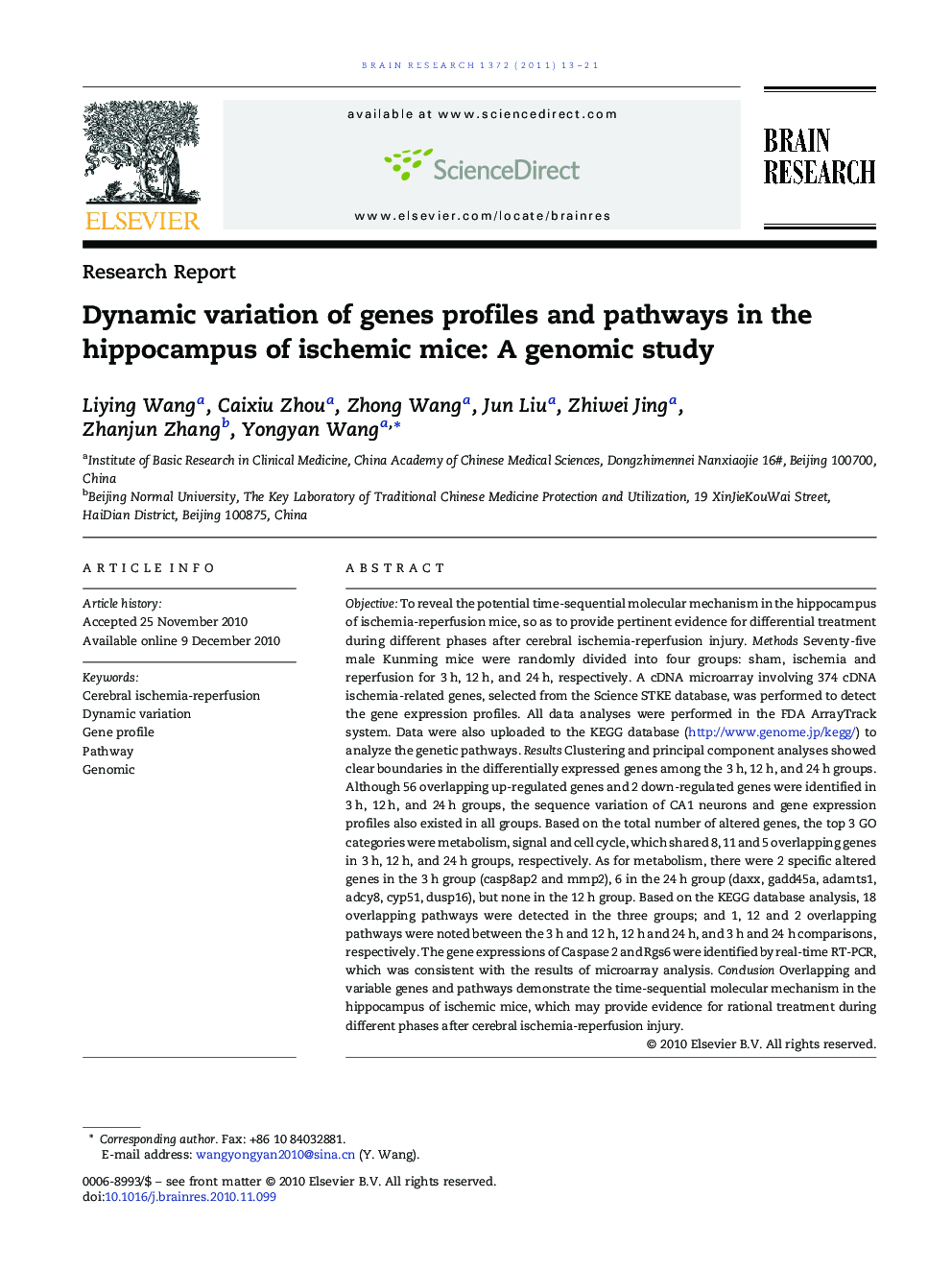| کد مقاله | کد نشریه | سال انتشار | مقاله انگلیسی | نسخه تمام متن |
|---|---|---|---|---|
| 6265172 | 1614067 | 2011 | 9 صفحه PDF | دانلود رایگان |

ObjectiveTo reveal the potential time-sequential molecular mechanism in the hippocampus of ischemia-reperfusion mice, so as to provide pertinent evidence for differential treatment during different phases after cerebral ischemia-reperfusion injury. Methods Seventy-five male Kunming mice were randomly divided into four groups: sham, ischemia and reperfusion for 3Â h, 12Â h, and 24Â h, respectively. A cDNA microarray involving 374 cDNA ischemia-related genes, selected from the Science STKE database, was performed to detect the gene expression profiles. All data analyses were performed in the FDA ArrayTrack system. Data were also uploaded to the KEGG database (http://www.genome.jp/kegg/) to analyze the genetic pathways. Results Clustering and principal component analyses showed clear boundaries in the differentially expressed genes among the 3Â h, 12Â h, and 24Â h groups. Although 56 overlapping up-regulated genes and 2 down-regulated genes were identified in 3Â h, 12Â h, and 24Â h groups, the sequence variation of CA1 neurons and gene expression profiles also existed in all groups. Based on the total number of altered genes, the top 3 GO categories were metabolism, signal and cell cycle, which shared 8, 11 and 5 overlapping genes in 3Â h, 12Â h, and 24Â h groups, respectively. As for metabolism, there were 2 specific altered genes in the 3Â h group (casp8ap2 and mmp2), 6 in the 24Â h group (daxx, gadd45a, adamts1, adcy8, cyp51, dusp16), but none in the 12Â h group. Based on the KEGG database analysis, 18 overlapping pathways were detected in the three groups; and 1, 12 and 2 overlapping pathways were noted between the 3Â h and 12Â h, 12Â h and 24Â h, and 3Â h and 24Â h comparisons, respectively. The gene expressions of Caspase 2 and Rgs6 were identified by real-time RT-PCR, which was consistent with the results of microarray analysis. Conclusion Overlapping and variable genes and pathways demonstrate the time-sequential molecular mechanism in the hippocampus of ischemic mice, which may provide evidence for rational treatment during different phases after cerebral ischemia-reperfusion injury.
Research HighlightsâºStudy the dynamic pathological mechanism of cerebral ischemia from genome. âºGene expression and pathways present time sequence, which suggest treating with time. âºMany genes and pathways related to ischemia-reperfusion injury had been found first.
Journal: Brain Research - Volume 1372, 4 February 2011, Pages 13-21